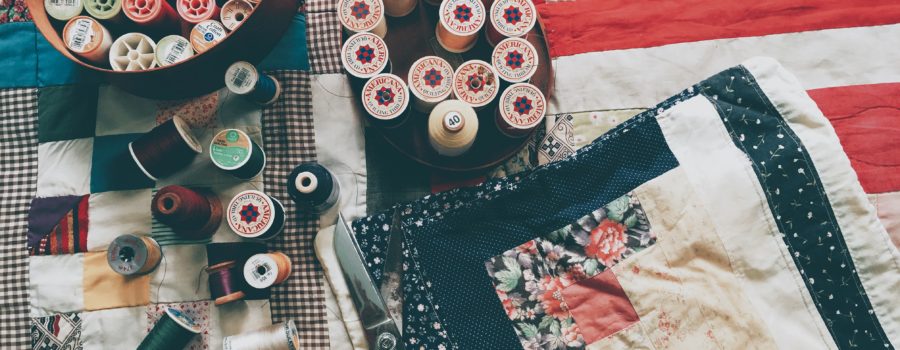None of them sign their names to the linen panel.
Aelfleda, was certainly one of those women. A noble Anglo-Saxon of the Middle Ages, she lived near Ely, in Cambridgeshire, England, and was renowned for her prowess with a needle. Late in the year 991, she created a hanging tapestry curtain that illustrated the valiant deeds of her husband, Chieftain Brithnoth. He died at the Battle of Maldon on August 10, 991, defeated by the invading Vikings, referred to at the time as Danes.
Aelfleda created the tapestry, no doubt, to preserve her husband’s legacy. After all, he was the Earl of Essex. She gave the tapestry as a gift to the Abbey of Ely in Cambridge. Records show that after Aelfleda’s death, the head of the abbey granted her granddaughter a small village nearby, dedicated to preserving the art of textile tapestries.
And there the story might have ended, except that a scholarly notion abounds that Aelfleda’s tapestry became the inspiration for the more famous Bayeux Tapestry. That tapestry was created some 80 years later and portrayed the historic Battle of Hastings in 1066.
Aelfleda’s tapestry has long since disappeared, but The Bayeux Tapestry has survived nine centuries, telling the story of the pivotal battle between England and France that consequently changed history.
Who exactly made the Bayeux Tapestry is not known. Scholars attest that its superb construction points most decidedly to English members of a guild, either men or women or both. What is known of the 231-foot woolen embroidered scroll, is that it tells in exquisite detail the series of historical events that led to the Battle of Hastings, in chronological order, and containing all the gore and glory of warfare at that time.
For those of you unfamiliar with the Battle of Hastings, this is in 1066 when William the Duke of Normandy (later called The Conqueror) sailed from Normandy, France, and defeated the Anglo-Saxons across the English Channel in Essex, England. In this decisive battle, William the Conqueror forever established Norman rule of Britain.
The Bayeux Tapestry is believed to have been commissioned by the Bishop of Bayeux, Odo of Centeville, who happened to be William the Conqueror’s half-brother. The purpose was to celebrate and acknowledge William’s conquest of England and at the same time draw the moral that Howard’s defeat (Anglo-Saxon king) was divinely construed because he had gone back on an oath made in church.
Scholars agree that the tapestry was designed most likely by an Englishman who had the extensive military knowledge and could draw the pictures of the horses in battle, the Viking-inspired ships, and all the soldiers (both Anglo-Saxon and Norman) in authentic military garb.
A side note: the Vikings had started invading and conquering numerous European principalities starting around 800 A.D. When they landed on the north shore of France and took over the population, the area became known as Northman Land, eventually shortened to Normandy. William the Conqueror would have descended then from a Viking-Franc heritage.
Back to the Bayeux Tapestry: The needle workers transferred the original drawings to the linen, and created embroidered panels that were 20 inches high, each one approximately one yard in length.
Later, a more sturdy linen backing was sewn on, and the panels numbered.
The tapestry must have taken months to sew and how many skilled crafts-people worked on it, can only be imagined. Again, no one signed their name to the linen. But what makes the Bayeux Tapestry so amazing is the authenticity of details from that period that brings the story to life.
As one walks (left to right, as if reading a book) along the Tapestry, now mounted in a special museum in Bayeux, France, the story unfolds depicting 626 human figures, 190 horses, 35 dogs, numerous ships, and only 500 short inscriptions in Latin.
I was fortunate to visit the museum and spent over an hour walking along the tapestry and ‘reading’ the embroidered pictures. The embroidery itself was masterful, and the depiction of life in 1066 was illuminating.
The panels, constructed of biscuit-colored linen, have the dominant colors of the horses, ships, and soldiers’ garb in red-browns, blues, and browns, although a total of eight different colors can be seen. Constructed continuously, the scroll records everything—what the people wore, what they ate, what the buildings looked like; even the appearance of Halley’s Comet was noted.
A descendant of William the Conqueror still sits on the British throne today. That would be Queen Elizabeth II, and I am certain she has seen the Bayeux Tapestry and marveled at the handiwork of the unknown needle-workers who chronicled for the future, how Anglo-Saxon society was vanquished and the new nation became Britain.
If you enjoyed this month’s blog, sign up on the right side-bar to become a follower of Strong Women. Then click the links below to see my two favorite strong women!
www.amzn.com/1940553024.
www.amzn.com/1940553067.


Do you have a favorite strong woman who deserves to be known? Tell me who she is!
~ Linda:)




